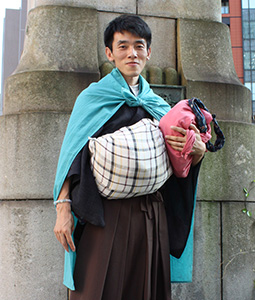
Yokoyama Isao, the Furoshiki Prince 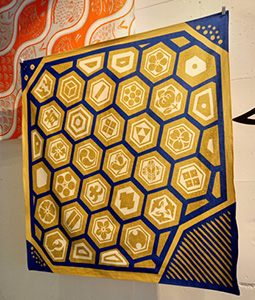
Furoshiki wrapping cloths laid flat 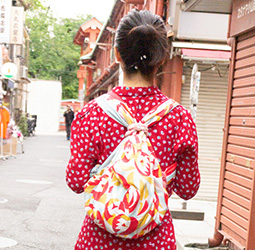
A single furoshiki can be tied to create a backpack 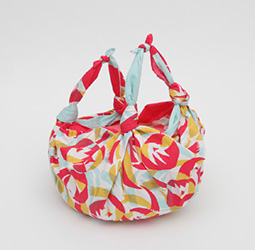
A furoshiki tied into the shape of a tote bag 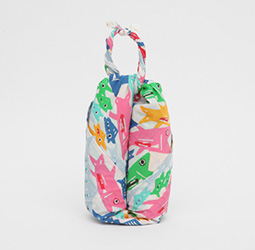
A furoshiki wrapped around two glass bottles 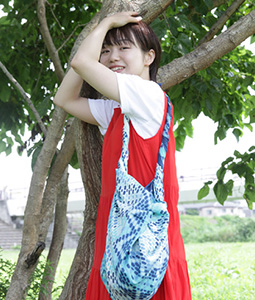
A furoshiki made into a reusable shopping bag
September 2020
The Furoshiki Prince and the Revival of the Wrapping Cloth
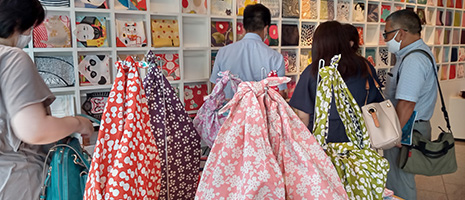
The traditional wrapping cloths known as furoshiki are making a comeback in Japan as an alternative to disposable shopping bags. Yokoyama Isao, the self-styled “Furoshiki Prince,” is promoting the revival of furoshiki by demonstrating how to use the traditional wrapping cloths in everyday modern life.

The furoshiki is a nearly square-shaped piece of fabric which has long been used to wrap and carry things in Japan. The custom of wrapping valuable objects in cloth is said to have started in the Nara period (710–794), but it was in the Edo period (1603–1867) that wrapping cloths became widely used by the general public. In this period, communal public bathhouses (now sento) grew in popularity in cities in Japan, especially in Edo (present-day Tokyo). Before taking a bath, people took to bundling their clothes and belongings in wrapping cloths in the dressing room to prevent them from getting mixed up with those of other bathers, giving the cloths their name, “furoshiki.” (“Furo” means “bath” and “shiki” means “to spread.”) Furoshiki were widely used in the Edo period for carrying things on trips, too. There are many ukiyo-e woodblock prints of the time depicting travelers with bulging furoshiki slung over their backs.

As modernization gathered pace in the latter half of the nineteenth century, furoshiki dropped out of use as Japanese lifestyles became increasingly westernized, and after the Second World War, furoshiki disappeared from everyday life, being replaced by handbags or backpacks and disposable shopping bags.
However, there is one person busy holding workshops and events across Japan to try and bring the furoshiki back to everyday life. That person is Yokoyama Isao—the Furoshiki Prince. Yokoyama demonstrates ways to utilize furoshiki in a variety of everyday situations—from travel and outdoor activities to carrying children’s toys and first aid—beginning with the basics of wrapping and tying.

Summarizing the furoshiki’s advantages, Yokoyama says, “Items carried inside a furoshiki don’t rattle around as they can be tightly wrapped, enveloping their shape. Depending on the way you wrap or tie it, the furoshiki can also be used as a bag. Best of all, after it has been used, the furoshiki can be folded back into a small, single piece of fabric, ready to be used for another purpose.”
Yokoyama became fascinated by the high functionality and efficient beauty of furoshiki as a student at art university. He has used a furoshiki in place of a bag ever since, some twenty years now, no matter where he goes.

“The world is filled with disposable things," Yokoyama says. “When plastic and paper bags at the grocery store and product packaging are thrown away, it places a burden on the environment. With a single furoshiki, you can wrap and carry objects of any shape using different wrapping methods, and there is no waste as you can use the furoshiki time after time. Many people from overseas go to furoshiki specialty stores to find souvenirs. There are so many designs at these stores that a customer can enjoy just looking at them all. Furoshiki can also be enjoyed as a fashion item as they come in a range of sizes, from 50 cm squares to 200 cm squares.”

Plastic shopping bags began to incur a mandatory fee starting in July 2020 as one measure against plastic garbage in Japan, and this is pushing residents to reexamine their lifestyles. Recently, more and more people carry reusable shopping bags that can be folded up when shopping. Yokoyama explains that packing a furoshiki on shopping outings has plenty of benefits.
“A furoshiki can be used as a backpack or a tote bag. Breakable bottles can then be wrapped and carried safely. Or the furoshiki might be used as a shawl or hood to protect against the wind, cold or rain. I hope to spread word of the many qualities of furoshiki, which modern Japanese people have largely forgotten about, and contribute to the preservation of the environment at the same time.”

The return of furoshiki to modern life draws on a Japanese trait that has not been lost, that of using things carefully and wasting nothing. Clearly, a great many possibilities are wrapped up in the revival of the furoshiki.

